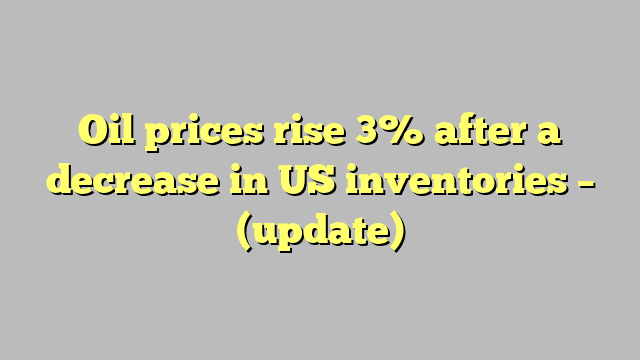Oil prices rose by about 3% at the end of trading today, Wednesday, June 28 (2023), with a noticeable decline in US inventories, supported by hopes for a recovery in demand.
This came after US data showed a larger-than-expected drop in inventories, indicating strong demand from the world’s largest oil consumer.
Oil prices are facing headwinds that prevent them from expanding gains, in light of fears of an economic recession, with plans of many central banks around the world to raise interest rates to control growing inflation.
Oil prices today
At the end of the session, Brent crude futures – for August 2023 delivery – rose by 2.4%, to record the price of a barrel of oil at about $74.03.
US West Texas Intermediate crude futures – August 2023 delivery – also increased by 2.8%, to $69.56 a barrel, according to figures seen by the specialized energy platform.
And oil prices ended their trading yesterday, Tuesday, June 27, down by about 2.5%, after rising in early trading, supported by fears of political instability in Russia and potential supply disruptions, as well as hopes for a recovery in US demand before the summer season.

Oil price analysis
In the previous session, the oil markets were affected by signs about central banks’ intention to proceed with raising interest rates, which threatens to stagnate the demand for crude.
“Tuesday’s decline has brought Brent and West Texas closer to support levels that held during the oil price slump in the past two months. The floor is being tested again, whether it holds or not,” said Vanda Insights, an oil market analyst, Vandana Hari.
It added, “The widening swing and weak decline along the forward curves of Brent and WTI crude indicate the market’s increasing awareness of oversupply,” according to Reuters.
US crude stocks fell by 9.6 million barrels during the week ending June 23, more than analysts’ expectations, while gasoline and distillate stocks rose.
demand for oil
On the demand front, European Central Bank President Christine Lagarde said on Tuesday that stubbornly high inflation would require the bank to avoid announcing an end to interest rate hikes.
Higher interest rates could affect economic activity and demand for oil.
The rise in US consumer confidence in June also led to market fears that the Federal Reserve may continue to raise interest rates.
Analysts said that oil prices are struggling to get rid of concerns that higher interest rates will affect global growth and demand for oil.
“We continue to expect market tightening in the second half of 2023 on the back of Saudi supply cuts starting in July with upside risks to prices from current levels,” analysts at National Australia Bank Commodities Research said in a note.
Separately, Russia’s energy ministry said it saw no shortage of gasoline in the domestic market, as companies cut exports and increased production after gradually completing planned maintenance.
The Energy Department added that diesel production at the end of June was 2% higher than in the same period last year, and inventories are at a historic high.
In China, annual profits at industrial firms extended a double-digit decline in the first five months of 2023, as slumping demand squeezed margins, raising hopes for more policy support to boost the faltering economic recovery after the coronavirus pandemic.

Leave a Reply